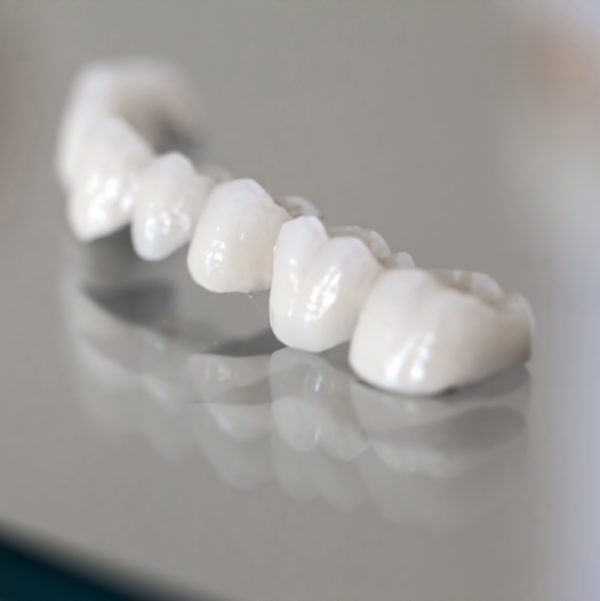What are Dental Bridges?
A bridge is a fixed dental restoration that uses adjacent teeth or dental implants to secure an artificial tooth (or teeth) within a gap created by one or more missing teeth.
Bridges are utilized to:
- Repair your smile by replacing a missing tooth (or teeth)
- Restore your ability to bite, chew and speak properly
- Prevent teeth from moving out of position
- Maintain the shape of your face
Four common types of bridges available to patients include:
- Traditional Bridges: The most popular option, traditional bridges consist of one or more artificial teeth held in place by dental crowns. Crowns are cemented onto natural, adjacent teeth and an artificial tooth is attached in between.
- Cantilever Bridges: Similar to traditional bridges, a cantilever bridge is supported by an adjacent tooth on only one side.
- Maryland Bridges: This option consists of an artificial tooth that is held in place by a metal or porcelain framework. A framework is bonded to the back of natural, adjacent teeth and a false tooth is positioned in between.
- Implant-Supported Bridges: Rather than being supported by crowns or frameworks using your natural teeth, these bridges are supported by dental implants that are surgically positioned in your jawbone.
It should be noted that options 2 and 3 have a very limited application and very specific requirements that need to be confirmed by your dentist.

Bridge Treatment Process
The treatment process varies slightly depending on the type of bridge your dentist recommends. However, there are several common steps you can expect. During your first appointment, the teeth adjacent to the gap, referred to as abutment teeth, will be prepared. This could involve contouring and/or filing your teeth for crown placement or having teeth removed to receive dental implants at a later date. Both preparatory procedures require a local anesthetic to be administered.
Once your teeth are prepared and/or dental implants are in place, impressions of your teeth are made using putty or a digital scanner. The impressions are sent to a laboratory where your dental restoration is custom-made to fit your mouth. You may receive a temporary bridge or crowns to protect your teeth and gums while your permanent bridge is being fabricated.
During your next visit, the temporary bridge or crowns will be removed and your permanent bridge will be inserted and cemented into place. Your dentist will ensure the bridge fits properly and offer guidance for how to care for your dental restoration.
Risks & Complications
While dental bridges are an effective solution to replace missing teeth, there are potential risks and complications. The following describes some but not all of these risks and complications.
You may experience varying degrees of sensitivity after your bridge is inserted and fitted. This may be due to a high bite where the bridge is the first point of contact for your bite or the bite is heavy on the bridge. If the sensitivity does not lessen within a few days, contact your dentist for further instructions.
In the preparation process, as the tooth is filed and contoured closer to the nerve, the nerve may be irreparably traumatized. In this situation, a root canal may need to be completed through the bridge. Furthermore, there is risk of tooth decay on natural teeth under the bridge crowns over time as the margin of the crowns open. It’s important to have your dental restoration fitted correctly and perform oral care on a daily basis.
In some cases, supporting teeth may not be strong enough to hold a bridge in place, causing these teeth to break or fracture. Your dentist will identify whether your natural teeth are strong enough before the treatment process begins, but there is a possibility that your bridge may collapse in the future if abutment teeth fracture.
Bridges and crowns can chip or fracture, typically due to eating hard foods or experiencing injury to the mouth. Treatment will differ depending on the severity of the chip or fracture. Additionally, bridges can fall off entirely. The cement holding the crowns and bridges in place could fail, which would likely require the dental restoration to be refitted. If your abutment teeth are too weak to support the bridge, they may need to be replaced with dental implants.
You may not experience any functional issues with your bridge for many years. However, you could notice aesthetic changes as time passes. Since your gums shrink as you age, your dental bridge may not appear to fit your mouth in the future. At this point, your bridge may need to be replaced.
Bridges are a common, effective dental restoration to close the gap between missing teeth. Contact Bearspaw Dental to learn more and book your appointment.

